The spinach is cooked down to create Cream of Spinach.
Category Archives: #Culinary
Lab #5 Sauces/ HMGT1203Sec.LC22
Lab #5 Sauces/ HMGT1203Sec.LC22
Lab #5 Sauces/ HMGT1203Sec.LC22
Lab #5 Sauces/ HMGT1203Sec.LC22
Lab #5 Sauces/ HMGT1203Sec.LC22
#HMGT1203LC22 Week 3 Class Pictures
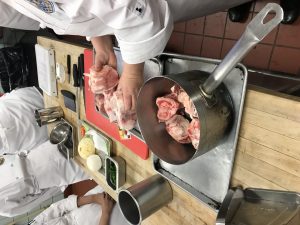
Week 3 The Class Made A Brown Beef Stock and A White Veal Stock. Professor Zimmerman Demonstrated The Bones and The Difference In The Age of The Bones
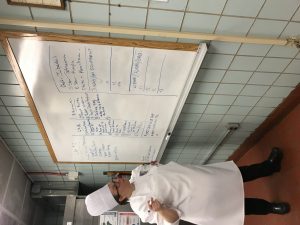
Professor Zimmerman and The Students Wrote Out The Procedure For Making A Brown Beef Stock and The White Veal Stock
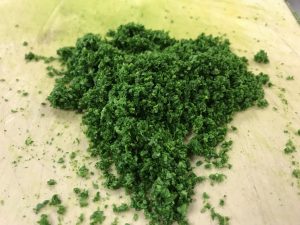
Students Minced Curly Parsley To A Fine Dust. We Learned How To Properly Remove The Leaf and How To Properly Wash It
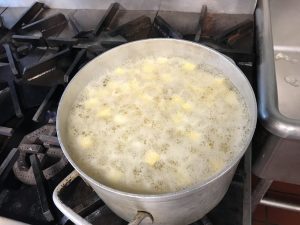
Professor Zimmerman Blanched Rutabaga That Were Then Cooked Two Styles, One On A High Flame and The Other On A Low Flame
#CULINARY 1 – 02/7/18. #HMGT1203LC22
 Professor ZIMMERMAN’S DEMO LESSON ON HOW TO PREP OUR INGREDIENTS BEFORE WE BEGIN TO PERFORM, SMALL DICE, MEDIUM DICE, LARGE DICE, AND MINCING.
Professor ZIMMERMAN’S DEMO LESSON ON HOW TO PREP OUR INGREDIENTS BEFORE WE BEGIN TO PERFORM, SMALL DICE, MEDIUM DICE, LARGE DICE, AND MINCING.

 MINCE!
MINCE!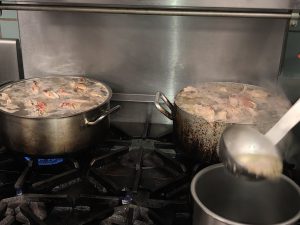 WHITE STOCK FAT IS BEING SKIMMED, STUDENTS ARE BEGINNING TO REMOVE THE BLANCHY WATER.
WHITE STOCK FAT IS BEING SKIMMED, STUDENTS ARE BEGINNING TO REMOVE THE BLANCHY WATER.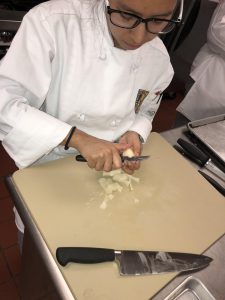 WOAH, PRACTICING HER TOURNE ON A POTATO!
WOAH, PRACTICING HER TOURNE ON A POTATO! The finished products of out knife skills.
The finished products of out knife skills.
Alexis Graham Mclean Hw#1
I think the use of social media in hospitality is a must. I believe it is essential in the hospitality industry, it helps promote businesses like restaurants and hotels. Social media has major impact in hospitality, it can either make you or break you. In today society everyone blogs/vlog and post their everyday life on social media pages. They post pictures of their meals, what they’re doing and how they feeling, which can be bad and good. I take pictures of the food I eat to admire the appealing meal and to encourage others to intake. By doing that I am promoting and advertising businesses, that help selling and marketing.
I am intrigued about what I will be learning about photography and food, which is where food stylist plays a part. They make food look photogenic, which is important. People will only eat food that looks appetizing and appealing. I can honestly say that, I do look at photos of food to help me decide if I would want to cook it or eat it. This class will teach me what to look for in good quality food photos.
I already enjoy taking pictures of the meals I make, however I don’t really post the photos on social media. I just feel that people on social media, sometimes have too much opinion despite others feelings.
Photography, Instagram, and the Food Industry
Najja Hennix
2/03/2018
I was excited to join this class because I love art, I love food, and I hope that one my career in my lifetime is to be a food photographer. In cookbooks and in everyday commercials we see the art of food photography. Photography in today’s society can potentially determine the success and serve as advertisement for a business. In this instagram era the camera is just important to the experience as a knife and fork. Anyone can be a food photographer with a smartphone and a tap of a finger.
It is the super bowl weekend. We will see lots of food commercials. When we see a pizza commercials and the cheese so deliciously melted and the Pepsi next to keep has a little bit of water dipping from it making you crave this meal. Photos of appealing food are captivating. I always take photos when I am at a restaurant and post them to snapchat or instagram so other can see it. I do this so others can try the great food I am eating and that is advertisement for the restaurant.
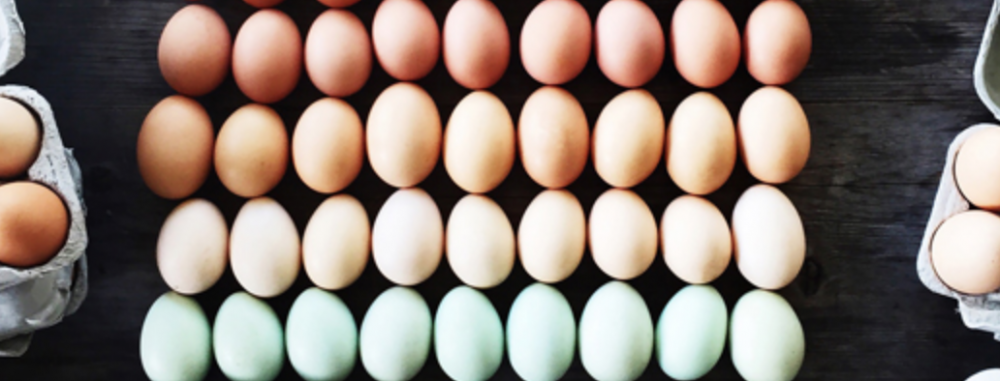
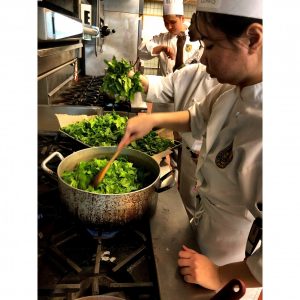
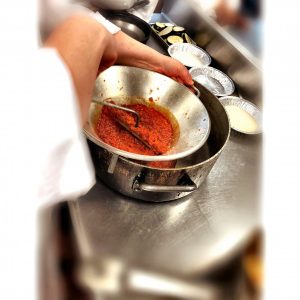
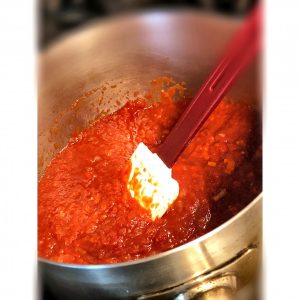
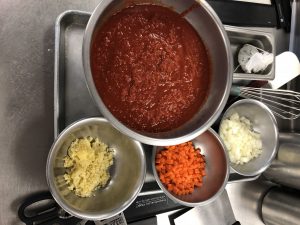
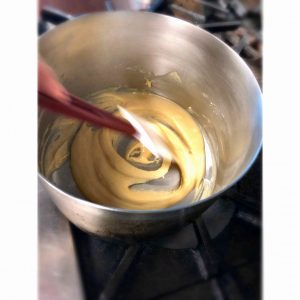
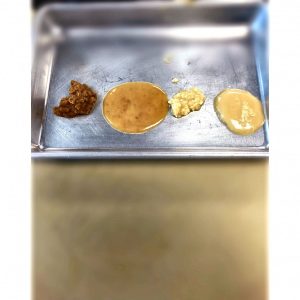
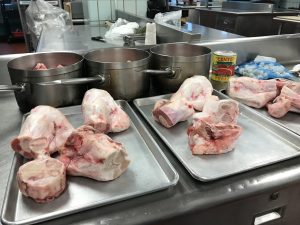
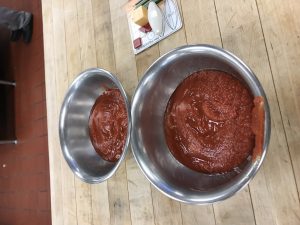
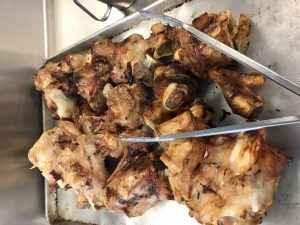
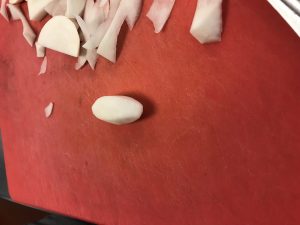
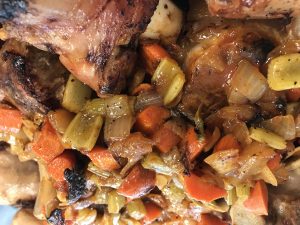
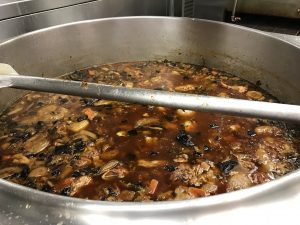
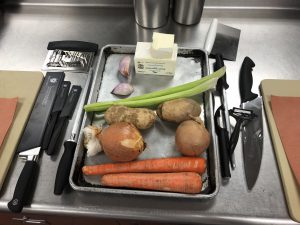
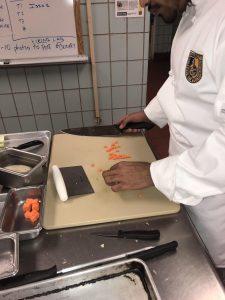 Practicing knife skills. The carrots on the cutting board are visual representations of a small dice while the ones in the dish are largely diced
Practicing knife skills. The carrots on the cutting board are visual representations of a small dice while the ones in the dish are largely diced

